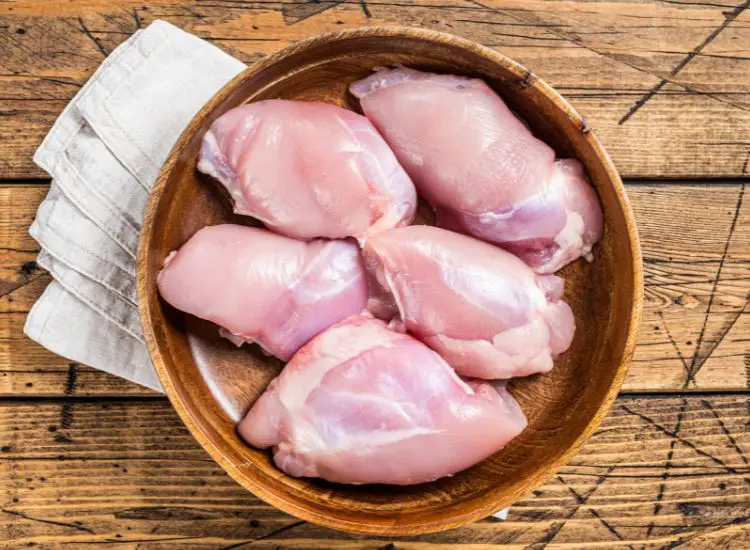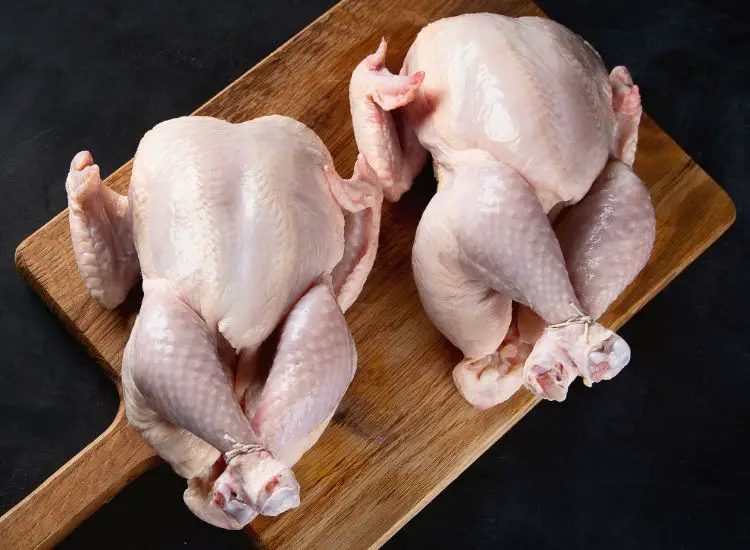How to Remove Tendon from Chicken Breast
Chewing on a piece of gross chicken can totally ruin your meal. That’s why you’ll need to learn how to remove the tendon from a chicken breast, before cooking.
Tendons are the white, stringy pieces that run along the length of the chicken breast. They can be tough and chewy, making the meat less enjoyable to eat. However, with the right technique removing tendons from chicken breasts can be a quick and easy process.

The first step in removing tendons from your chicken breasts is to locate them. Tendons are usually found on the underside of the breast, towards the “pointed” end.
Once you’ve located the tendons, you can use a sharp knife (or kitchen shears) to cut them out. It’s important to be gentle when cutting, as you don’t want to damage the meat or remove too much of it.
Locating the Tendon
If you’re having trouble locating the tendons or cutting them out, there are a few tricks you can try. Some people find it helpful to use a pair of pliers to grip the tendon and pull it out.
But you also might find that using a fork to hold down the chicken when cutting is easier. Whatever method you choose, be patient and take your time. With a little practice, you’ll be able to remove tendons from chicken breasts with ease.
Not all chicken breasts will be identical, but they should all have a tendon. As you become more familiar with this type of poultry, you will learn that some tendons are easier to find than others.
Understanding Chicken Anatomy
When it comes to removing tendons from a chicken breast, it’s helpful to have a basic understanding of chicken anatomy. Chickens have a skeletal structure that is similar to humans, with bones, muscles, and tendons that work together to create movement.
The breast of a chicken is located on the front of the bird, and it is made up of two halves, each with its own tendon. The tendons are thin, white, and fibrous, and they run through the breast meat, connecting the muscle to the bone.

To remove the tendons, you will need to locate them first. They are usually visible as thin, white lines running through the meat. Once you have located the tendons, you can use a sharp knife or kitchen shears to carefully cut them out.
It’s important to remove the tendons, because they can be very tough to eat. Believe me, chewing on this type of texture is unappealing and can ruin your food. By removing them, you can make the chicken breast more tender and easier to cook with.
Tools Required for Tendon Removal
Removing tendons from chicken breasts can be a challenging task, especially if you do not have the right tools for the job. Here are the essential tools you need to remove tendons from chicken breasts like a professional chef:
1. Poultry Shears
Poultry shears are specially designed scissors that make it easy to cut through bones and tendons. They are ideal for removing tendons from chicken breasts because they allow you to make precise cuts without damaging the meat.
2. Tweezers
Tweezers are another essential tool for removing tendons from chicken breasts. They allow you to grip and pull out the tendons with ease. You can use either straight or curved tweezers depending on your preference.
3. Cutting Board
A sturdy cutting board is necessary to provide a stable surface for working. It should be large enough to accommodate the chicken breasts and have a non-slip surface to prevent any sliding.
4. Sharp Knife
A sharp knife is essential for making precise cuts when removing tendons from chicken breasts. A chef’s knife or a boning knife is suitable for the job.
5. Paper Towels
Paper towels are also useful for wiping away any excess moisture or blood from the chicken breasts. They also provide a clean surface for working on.
Final Tips
With these essential tools, you can easily remove tendons from chicken breasts like a pro. Remember, they may be hard to locate at first but you will get better with time.
In summary, understanding chicken anatomy is an important part of removing tendons from chicken breast. By knowing where the tendons are located and how they connect to the muscle, you can remove them easily and create a more enjoyable eating experience.
